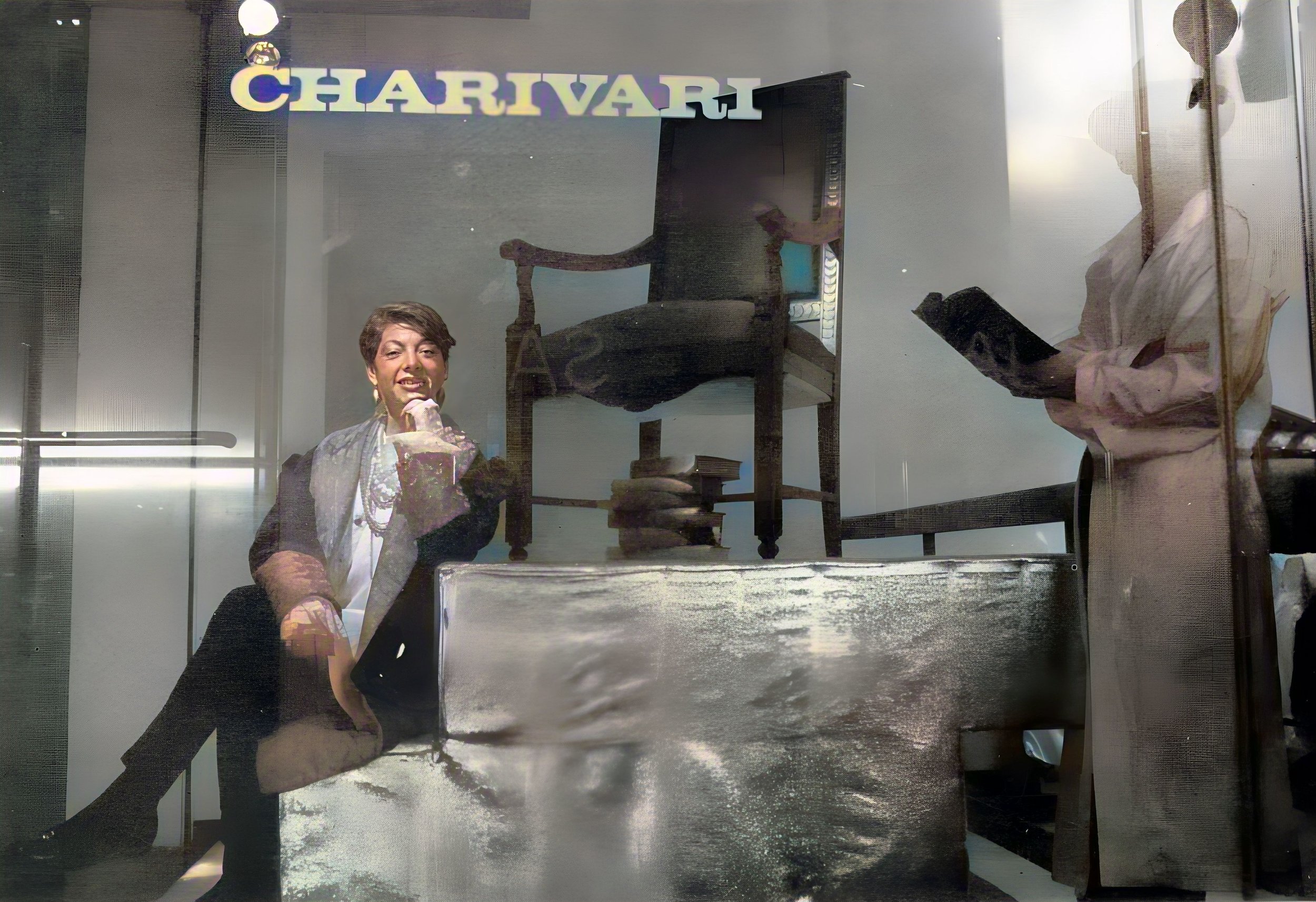La Mémoire Collective - The Collective Memory
Barbara Weiser
“Imagine me and you, I do
I think about you day and night, it's only right
To think about the girl you love and hold her tight,
So happy together.”
“I can’t see me lovin’ no body but you…”
Ahh, the instrumentation, the harmonizing, the bass, the guitar and distinct rhythm driven by the drums; and then the chorus, the explosion of orchestral horns and woodwinds.
Remember when “Happy Together” ruled the airways? The sound was the epitome of 1960s song arrangement. In fact, it was the number one song in the United States on April 1st, 1967, the day Charivari opened its doors, The Turtles sang their chorus in unison, and the Weiser’s were off to a remarkable start.
GoGo Dancer from Charivari’s opening day
Let’s fast forward to present day so I can tell you that we finally interviewed Barbara Weiser and our interview was nothing short of riveting. We came away from our interview feeling that she’s the person who holds the Charivari community's collective memories—the memories which encapsulate the company’s history and sustains its beloved legacy. So happy together…
Besides the fact of possessing a large collection of Charivari clothing and memorabilia, Barbara especially possesses sharp memories of the family’s relationships with their chosen designers. Whether she spoke of designers which the family supported, the most famous European designers today, or the American designers not as well-known at the time, it was with palpable fondness and assurance of their talents.
Most remarkably was how she recalled details and anecdotes, complete with emotions not only describing the early days of Charivari, but also painting an intimate portrait of her mother Selma, and their work together. For example, it was Barbara who casually came across Yohji Yamamoto’s clothing in Paris and how she had to call her mother, who “came running” to the shop to see such unique designs; her memories were obviously not etched in stone, they were etched in fashion. We won’t tell you more here, however, in the film you’ll discover how it really happened.
The conversation made it clear that together, the Weiser’s worked as a team, however, the relationship between mother and daughter was extraordinary. Their shared aesthetic sense, way ahead of their time, took them to places where they appreciated new and abstract silhouettes, fabrics and designs never before introduced in the United States.
“My mother was the most modern person I’ve ever experienced in my life”
Barbara Weiser
For Barbara in particular, it was her love of the unestablished, the new in fashion design that sustained her drive. She confessed, “I’m not a classicist” (in terms of simplicity, restraint, or proportion in clothing), “I like to find new paths and new energies.”
I had to ask, what did you love most about the company?
“What I liked most about it was, it was who we were.”
I listened intently as she gathered her thoughts and continued,
“I had the best kind of training one could have.”
All along, their approach as a business was led by a belief that Charivari was a vehicle to bring attention to the things they loved, and their endeavor to develop a clientele around people who shared that passion. And with that said, it was easy to piece it all together, to understand how they were able to consistently present their retail vision, take risks and span three decades.
“Me and you, and you and me
No matter how they toss the dice, it had to be
The only one for me is you, and you for me
So happy together”
Via ZOOM we laughed and learned down her memory lane why Margiela, Demeulemeester and Van Noten—the Belgian designers—became important to the Weiser’s business. Again, she reflected fondly about how she felt they respected the work they accomplished together, designer and retailer, and how important the relationship with the family was to them, each and every one…
Sadly, last December (2022), the world suffered the loss of British designer, Vivienne Westwood but interestingly, some time before her passing when we conducted the interview, Barbara shared with us how much she loved Westwood’s clothing. Westwood even gave the Weiser’s an exclusive for a men’s collection… about the designer, she said emphatically, “Vivienne Westwood was the most educated woman I had ever met in fashion”!
The Belgians, the Americans, the French, the Italians, the Brits, and the Japanese designers all played roles on the Charivari stage. Collectively, we reminisced quite an illustrious cast of characters who enriched the companys’ run.
And during Barbara’s musings, we were able to glean that it was the eclectic 1960s which afforded the Weiser's the freedom to use their personal tastes as a filter through which to “see”talent and most importantly, present their idea of fashion retail. And this is what you experienced—from neoprene jackets to deconstructed garments, and all the way back to suede miniskirts—when you stepped into the world of Charivari.
“So happy together
And how is the weather?
So happy together
We're happy together
So happy together
Happy together
So happy together
So happy together….”
Barbara, Selma & Jon in front of Charivari 72








